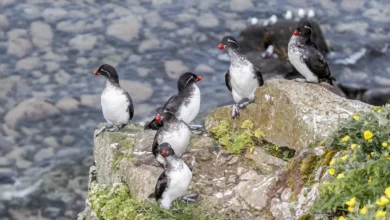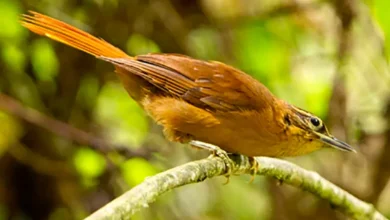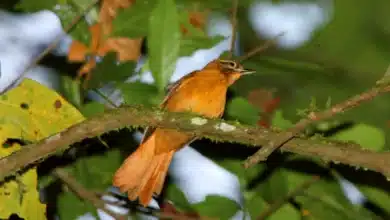Lake Kerkini Unveiled: A Wildlife Gem of Northern Greece
Lake Kerkini, nestled in the serene landscapes of Northern Greece, is one of the country’s most important ecological treasures. Situated approximately 29 miles from the Bulgarian border, Lake Kerkini is framed by the Kerkini Mountains to the north and the Marvovouni Mountains to the south. The lake spans about nine miles in length and five miles in width, making it a tranquil retreat for nature lovers. With its panoramic views of mountains, lush forests, and wetlands, the Lake Kerkini region has become a prime destination for those seeking an escape into nature. In addition to its breathtaking scenery, Lake Kerkini is home to an astonishing diversity of wildlife, making it an ideal spot for birdwatchers, conservationists, and outdoor enthusiasts alike.
The History of Lake Kerkini
Lake Kerkini wasn’t always the haven for wildlife and human activity that it is today. Before the 1930s, the area was dominated by vast marshlands, making it inhospitable for settlement or agriculture. In 1932, an artificial reservoir was created as part of an effort to manage the water flow of the Strymonas River. This project led to the formation of the lake, along with an intricate system of ditches and canals that drained the marshes and made the surrounding land suitable for farming, fishing, and habitation.
In 1980, a new dam was constructed, further modifying the shape of Lake Kerkini into its current pear-like form. The construction of the dam allowed for better control of the water levels, benefiting both agriculture and the lake’s surrounding ecosystems. What began as a project for land management and flood control ultimately gave rise to one of Europe’s most vital wetlands.
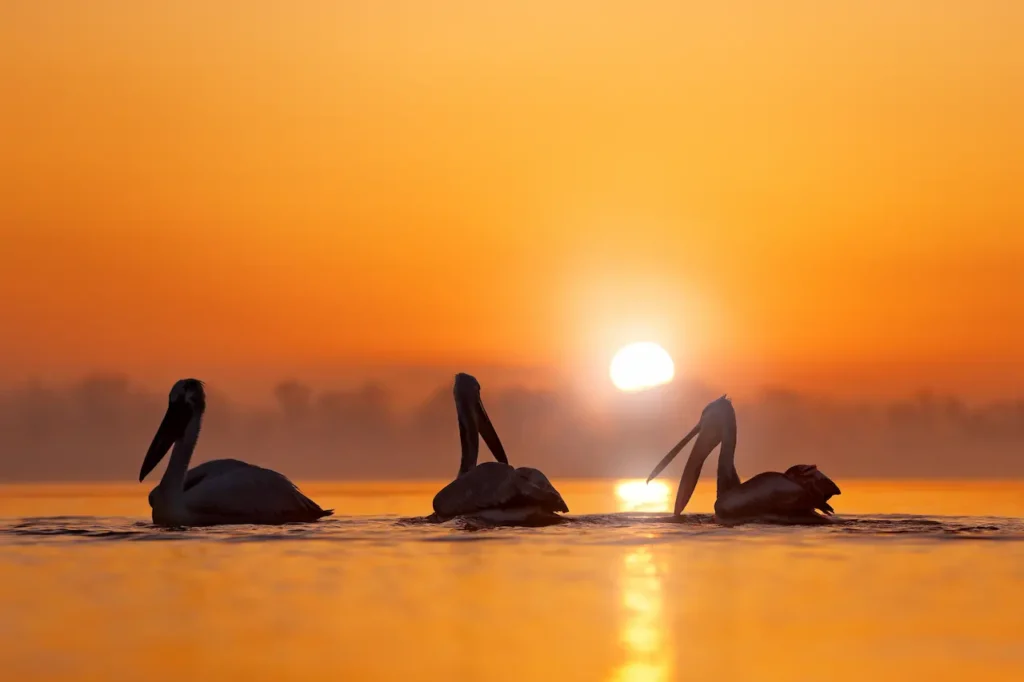
Wildlife at Lake Kerkini
Lake Kerkini is renowned for its rich biodiversity, especially its birdlife. The lake and its surrounding wetlands provide a crucial habitat for a multitude of species, making it one of the most significant birding locations in Europe. The area supports over 140 species of resident birds, with an additional 170 species passing through during their migratory journeys. Many of these species are rare or endangered, which has earned Lake Kerkini international recognition as a conservation priority.
Birds of Lake Kerkini
Among the bird species found at Lake Kerkini, several are of significant conservation concern, including the Dalmatian Pelican and the Pygmy Cormorant. The Dalmatian Pelican, one of the largest freshwater birds in the world, uses the lake as a breeding and feeding ground. These majestic birds are listed as “Near Threatened” on the IUCN Red List, and Lake Kerkini plays a crucial role in their conservation.
Birdwatchers often delight in spotting a variety of raptors, such as the Imperial Eagle and Booted Eagle, and waders like the Great White Egret. The diversity and abundance of birds make Lake Kerkini one of the premier birdwatching destinations in Greece and Europe.
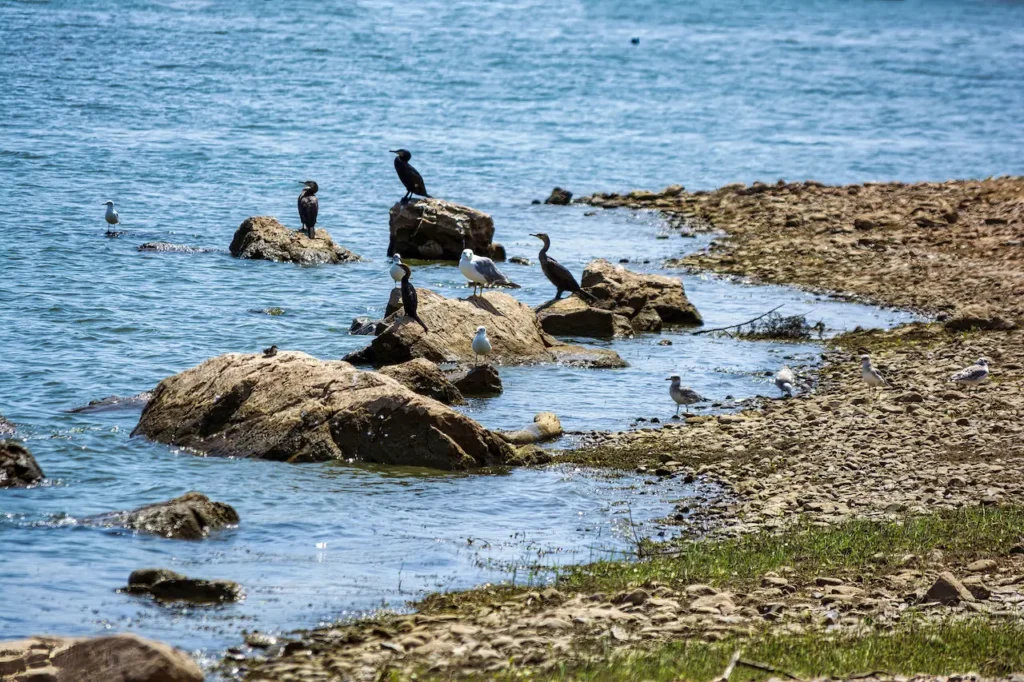
Other Wildlife Around Lake Kerkini
Lake Kerkini is not only a paradise for bird lovers. The surrounding forests, wetlands, and farmlands are home to a rich array of other wildlife species. The European water buffalo (Bubalus bubalis), a large mammal that plays a significant role in maintaining the area’s wetland ecosystem, is often seen grazing near the lake’s shores. These buffalo are not only important for the ecology but also provide sustainable livelihoods for local farmers.
The lake also supports a wide variety of reptiles, amphibians, and mammals. Species of turtles, frogs, and lizards are commonly found in and around the wetlands. Small mammals such as foxes, hares, and wild boars roam the forests, while larger animals like the wolf and roe deer occasionally venture down from the nearby mountains.
Over 100 species of butterflies have been recorded in the Lake Kerkini area, adding to the biodiversity of this important ecosystem. The surrounding flora is equally impressive, with 16 species of orchids thriving in the region, along with numerous other wildflowers, shrubs, and trees that create a haven for pollinators and other wildlife.
Conservation at Lake Kerkini
Lake Kerkini is recognized as one of the most important wetlands in Europe, designated as a National Nature Reserve and a Special Protection Area under European Union directives. It is also considered a Wetland of International Importance under the Ramsar Convention. This status is due in large part to the presence of rare and endangered species, such as the Dalmatian Pelican and Pygmy Cormorant, which rely on the lake and its wetlands for breeding and feeding.
The Management Authority of Kerkini Wetland oversees the lake’s conservation efforts, ensuring that human activity in the area is balanced with the needs of the ecosystem. Efforts to protect and monitor wildlife are ongoing, and the management authority works closely with local communities to promote sustainable land use practices. These efforts help maintain the delicate balance between agriculture, fishing, tourism, and wildlife conservation.
Potential Threats to Lake Kerkini’s Wildlife
Despite its protected status, Lake Kerkini faces several threats that could jeopardize its delicate ecosystems. One of the primary concerns is water management. The lake is an artificial reservoir, and fluctuations in water levels—especially during droughts or periods of heavy irrigation demand—can disrupt the habitat for many species, particularly birds that rely on shallow water for feeding and nesting.
Agricultural runoff and pollution also pose risks to the lake’s water quality. Fertilizers and pesticides used in surrounding farmlands can wash into the lake, causing eutrophication and degrading the water’s health. Additionally, invasive species introduced by human activity can outcompete native wildlife, threatening the biodiversity of the region.
Climate change is another potential threat, as rising temperatures and changes in rainfall patterns may alter the habitat and make it less suitable for the species that currently thrive there. The long-term sustainability of Lake Kerkini’s ecosystems will depend on continued conservation efforts and proactive management to mitigate these threats.
Activities at Lake Kerkini
Lake Kerkini offers a wide array of outdoor activities, catering to both casual visitors and avid nature enthusiasts. Birdwatching is undoubtedly the most popular activity in the region, with visitors from all over Europe flocking to observe the incredible diversity of avian species. Guided birding tours are available for those seeking expert knowledge on the best spots to observe rare birds.
In addition to birdwatching, visitors can enjoy boating, canoeing, and horseback riding along the lake’s shores. The surrounding mountains and forests provide excellent opportunities for hiking, cycling, and nature walks, allowing visitors to immerse themselves in the stunning natural beauty of the region. Local guides offer tours tailored to specific interests, whether it’s wildlife photography, butterfly watching, or exploring the cultural heritage of the nearby villages.
Exploring the Local Villages
While the region around Lake Kerkini is rural, it is within easy reach of Thessaloniki, Greece’s second-largest city, just an hour’s drive away. Thessaloniki is a bustling metropolis known for its rich history, vibrant nightlife, and world-class museums. Visitors to Lake Kerkini often fly into Thessaloniki and then make their way to the lake for a peaceful retreat in nature.
For those looking to explore the local area, the villages surrounding Lake Kerkini offer a glimpse into traditional Greek rural life. These villages feature quaint shops, authentic restaurants serving local cuisine, and opportunities for cultural experiences, such as learning about the region’s agricultural traditions or joining local festivals.
Accommodation Near Lake Kerkini
Visitors to Lake Kerkini will find a variety of accommodation options, from luxury hotels to cozy guesthouses. The Hotel Oikoperiigitis, located on the banks of the lake, is a popular choice. It features beautifully decorated rooms, a restaurant serving local dishes, and a lovely garden perfect for relaxing after a day of exploring. The hotel offers easy access to birdwatching tours and other outdoor activities.
Another excellent option is the Refanidis Luxury Hotel and Spa, which boasts elegant suites with balconies overlooking the lake, a spa for relaxation, and freshly baked goods for breakfast. Hotel Erodios, situated in the nearby village of Lithotopos, provides comfortable rooms with stunning views of the lake and mountains, along with traditional Greek cuisine.
These accommodations often help arrange activities such as mountain biking, canoeing, and birdwatching tours, making it easy for visitors to fully experience all that Lake Kerkini has to offer.
Conclusion
Lake Kerkini is a wildlife sanctuary that offers not only breathtaking views but also an unparalleled opportunity to witness some of the most unique bird species in Europe. Its wetlands, forests, and mountains create an ecological paradise that is home to a diverse array of flora and fauna. With its rich biodiversity and crucial role as a migratory stopover, Lake Kerkini deserves its status as a conservation priority. Through continued conservation efforts and sustainable tourism practices, this unique ecosystem can be preserved for future generations to enjoy.
